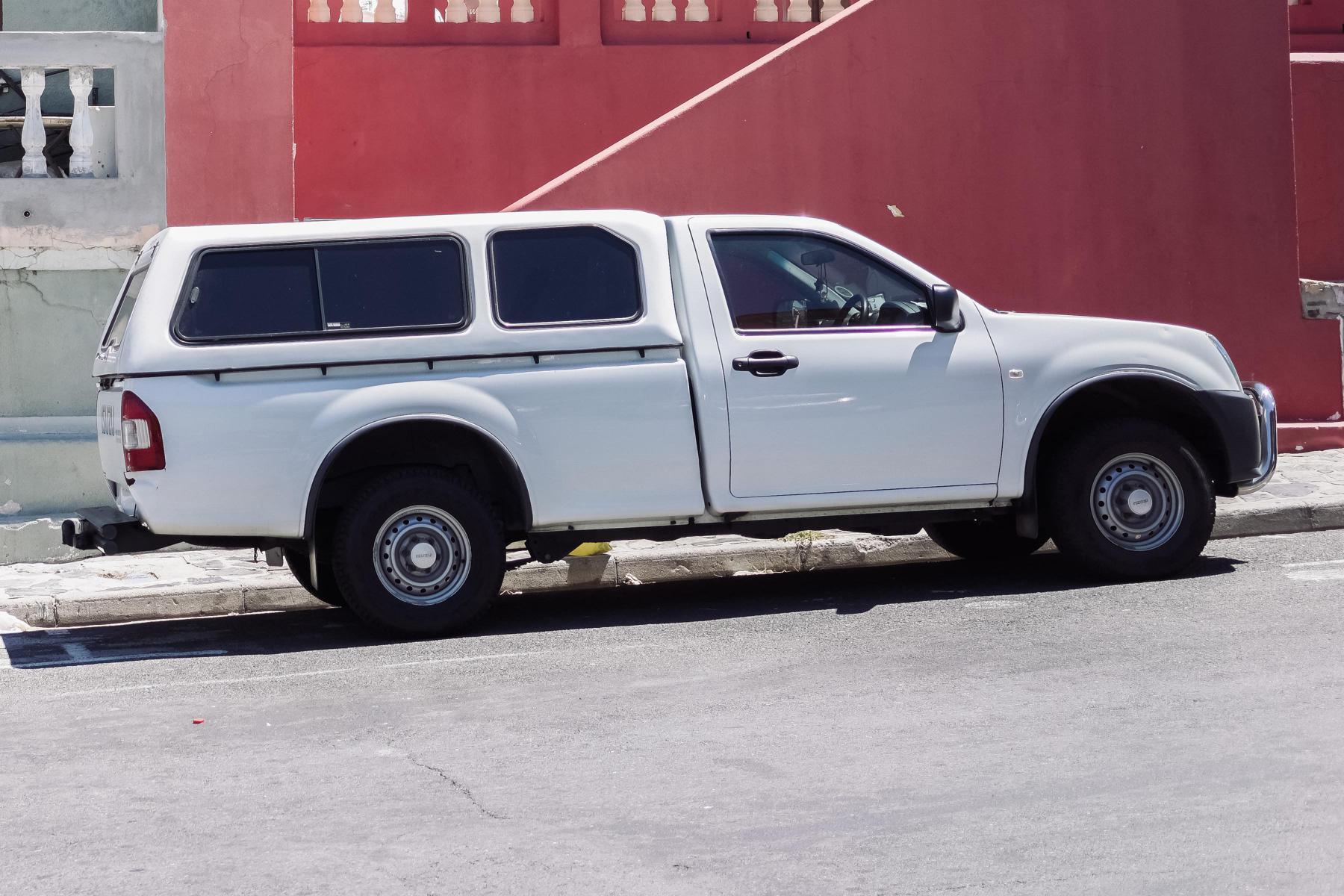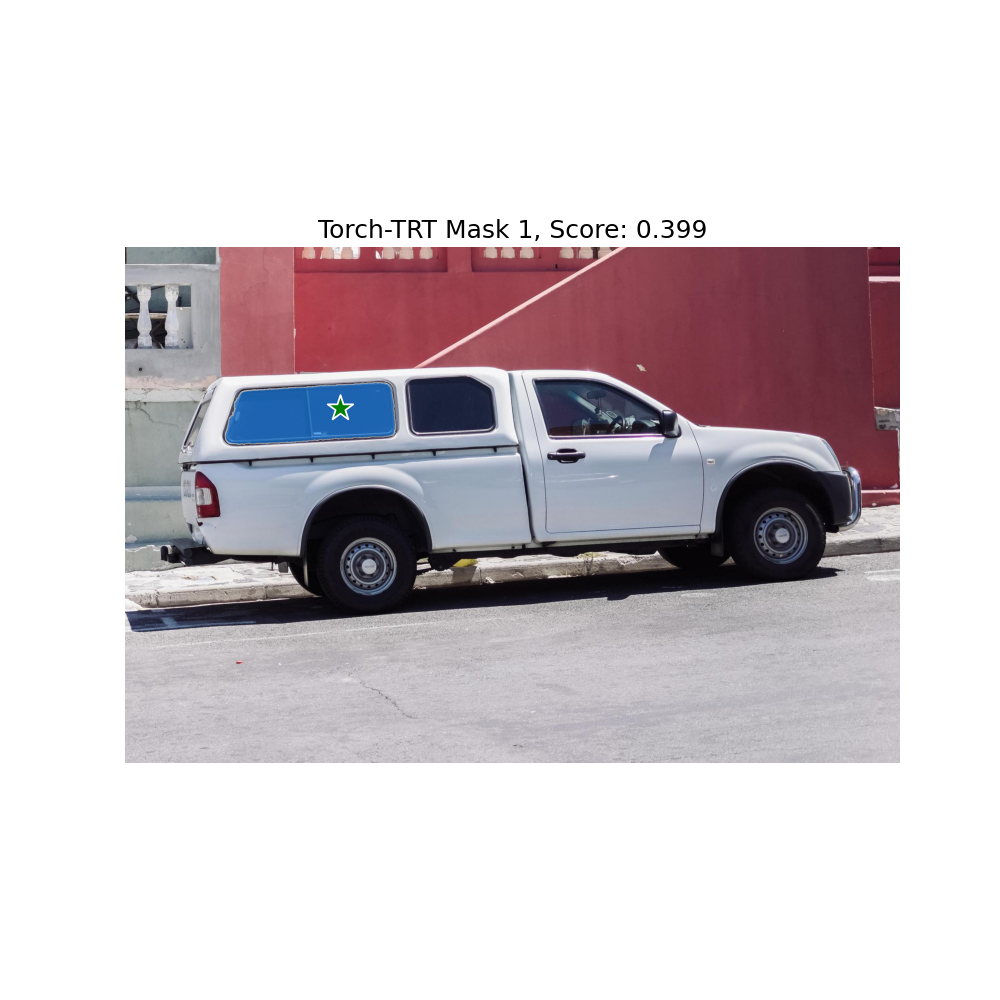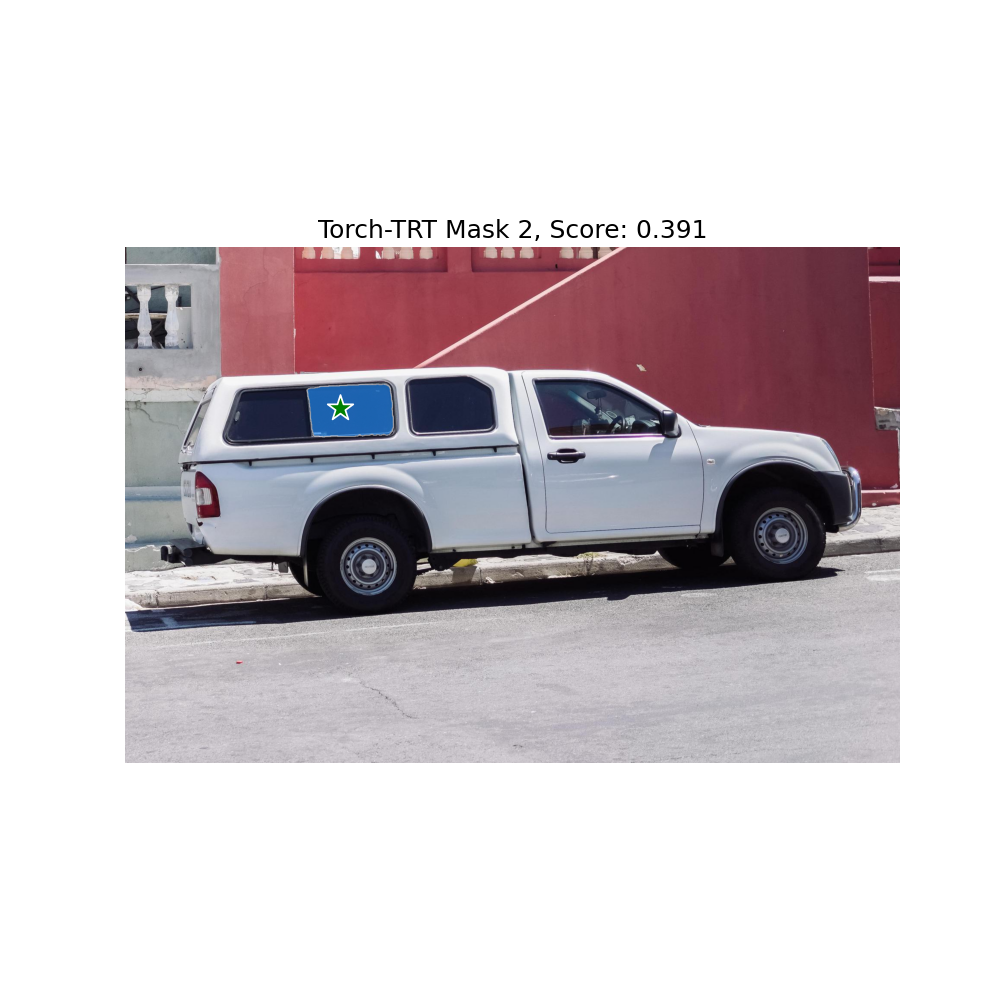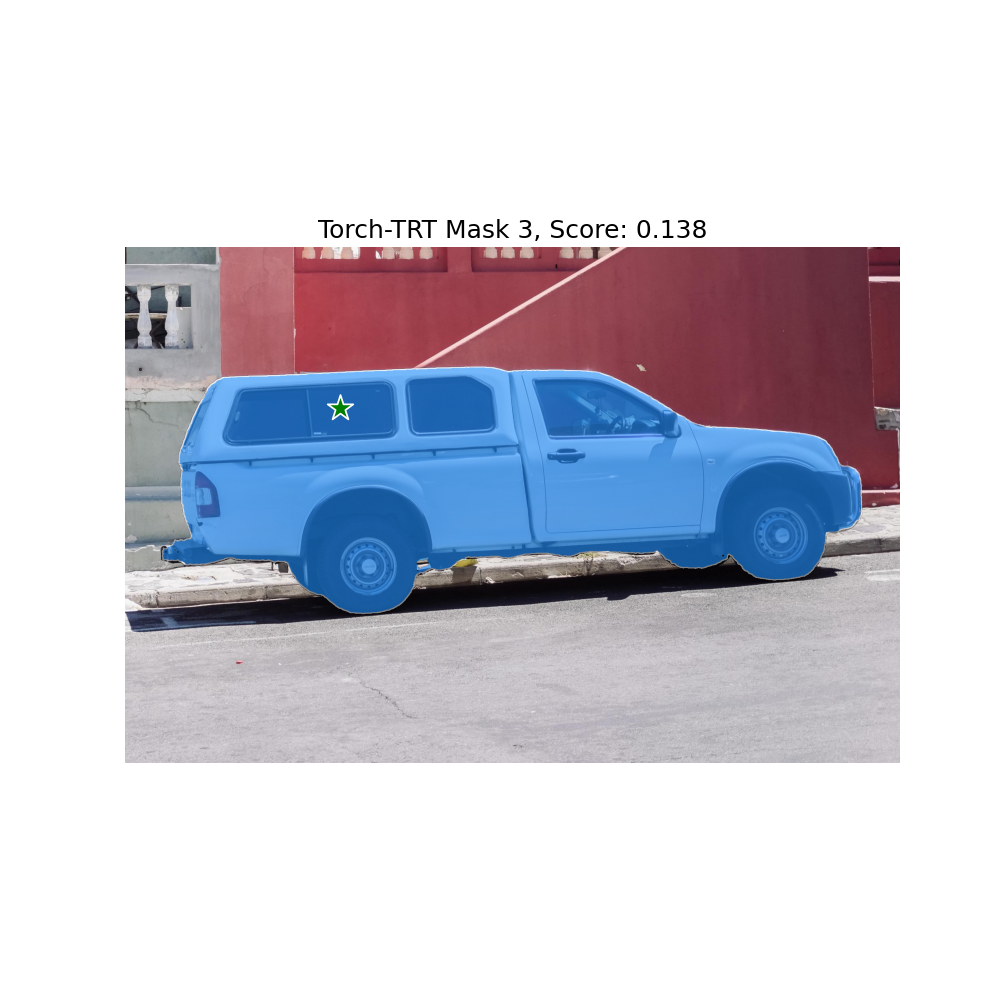Compiling SAM2 using the dynamo backend — Torch-TensorRT v2.8.0.dev0+ee32da0 documentation (original) (raw)
Note
Go to the endto download the full example code
This example illustrates the state of the art model Segment Anything Model 2 (SAM2) optimized using Torch-TensorRT.
Segment Anything Model 2 is a foundation model towards solving promptable visual segmentation in images and videos. Install the following dependencies before compilation
pip install -r requirements.txt
Certain custom modifications are required to ensure the model is exported successfully. To apply these changes, please install SAM2 using the following fork (Installation instructions)
In the custom SAM2 fork, the following modifications have been applied to remove graph breaks and enhance latency performance, ensuring a more efficient Torch-TRT conversion:
- Consistent Data Types: Preserves input tensor dtypes, removing forced FP32 conversions.
- Masked Operations: Uses mask-based indexing instead of directly selecting data, improving Torch-TRT compatibility.
- Safe Initialization: Initializes tensors conditionally rather than concatenating to empty tensors.
- Standard Functions: Avoids special contexts and custom LayerNorm, relying on built-in PyTorch functions for better stability.
Import the following libraries¶
import matplotlib import matplotlib.pyplot as plt import numpy as np import pandas as pd import torch import torch_tensorrt from PIL import Image from sam2.sam2_image_predictor import SAM2ImagePredictor from sam_components import SAM2FullModel
matplotlib.use("Agg")
Define the SAM2 model¶
Load the facebook/sam2-hiera-large pretrained model using SAM2ImagePredictor class.SAM2ImagePredictor provides utilities to preprocess images, store image features (via set_image function) and predict the masks (via predict function)
predictor = SAM2ImagePredictor.from_pretrained("facebook/sam2-hiera-large")
To ensure we export the entire model (image encoder and mask predictor) components successfully, we create a standalone module SAM2FullModel which uses these utilities from SAM2ImagePredictor class.SAM2FullModel performs feature extraction and mask prediction in a single step instead of two step process ofSAM2ImagePredictor (set_image and predict functions)
class SAM2FullModel(torch.nn.Module): def init(self, model): super().init() self.image_encoder = model.forward_image self._prepare_backbone_features = model._prepare_backbone_features self.directly_add_no_mem_embed = model.directly_add_no_mem_embed self.no_mem_embed = model.no_mem_embed self._features = None
self.prompt_encoder = model.sam_prompt_encoder
self.mask_decoder = model.sam_mask_decoder
self._bb_feat_sizes = [(256, 256), (128, 128), (64, 64)]
def forward(self, image, point_coords, point_labels):
backbone_out = self.image_encoder(image)
_, vision_feats, _, _ = self._prepare_backbone_features(backbone_out)
if self.directly_add_no_mem_embed:
vision_feats[-1] = vision_feats[-1] + self.no_mem_embed
feats = [
feat.permute(1, 2, 0).view(1, -1, *feat_size)
for feat, feat_size in zip(vision_feats[::-1], self._bb_feat_sizes[::-1])
][::-1]
features = {"image_embed": feats[-1], "high_res_feats": feats[:-1]}
high_res_features = [
feat_level[-1].unsqueeze(0) for feat_level in features["high_res_feats"]
]
sparse_embeddings, dense_embeddings = self.prompt_encoder(
points=(point_coords, point_labels), boxes=None, masks=None
)
low_res_masks, iou_predictions, _, _ = self.mask_decoder(
image_embeddings=features["image_embed"][-1].unsqueeze(0),
image_pe=self.prompt_encoder.get_dense_pe(),
sparse_prompt_embeddings=sparse_embeddings,
dense_prompt_embeddings=dense_embeddings,
multimask_output=True,
repeat_image=point_coords.shape[0] > 1,
high_res_features=high_res_features,
)
out = {"low_res_masks": low_res_masks, "iou_predictions": iou_predictions}
return outInitialize the SAM2 model with pretrained weights¶
Initialize the SAM2FullModel with the pretrained weights. Since we already initializedSAM2ImagePredictor, we can directly use the model from it (predictor.model). We cast the model to FP16 precision for faster performance.
encoder = predictor.model.eval().cuda() sam_model = SAM2FullModel(encoder.half()).eval().cuda()
Load a sample image provided in the repository.
input_image = Image.open("./truck.jpg").convert("RGB")
Load an input image¶
Here’s the input image we are going to use

input_image = Image.open("./truck.jpg").convert("RGB")
In addition to the input image, we also provide prompts as inputs which are used to predict the masks. The prompts can be a box, point as well as masks from previous iteration of prediction. We use a point as a prompt in this demo similar to the original notebook in the SAM2 repository
Preprocessing components¶
The following functions implement preprocessing components which apply transformations on the input image and transform given point coordinates. We use the SAM2Transforms available via the SAM2ImagePredictor class. To read more about the transforms, refer to https://github.com/facebookresearch/sam2/blob/main/sam2/utils/transforms.py
def preprocess_inputs(image, predictor): w, h = image.size orig_hw = [(h, w)] input_image = predictor._transforms(np.array(image))[None, ...].to("cuda:0")
point_coords = torch.tensor([[500, 375]], dtype=torch.float).to("cuda:0")
point_labels = torch.tensor([1], dtype=torch.int).to("cuda:0")
point_coords = torch.as_tensor(
point_coords, dtype=torch.float, device=predictor.device
)
unnorm_coords = predictor._transforms.transform_coords(
point_coords, normalize=True, orig_hw=orig_hw[0]
)
labels = torch.as_tensor(point_labels, dtype=torch.int, device=predictor.device)
if len(unnorm_coords.shape) == 2:
unnorm_coords, labels = unnorm_coords[None, ...], labels[None, ...]
input_image = input_image.half()
unnorm_coords = unnorm_coords.half()
return (input_image, unnorm_coords, labels)Post Processing components¶
The following functions implement postprocessing components which include plotting and visualizing masks and points. We use the SAM2Transforms to post process these masks and sort them via confidence score.
def postprocess_masks(out, predictor, image): """Postprocess low-resolution masks and convert them for visualization.""" orig_hw = (image.size[1], image.size[0]) # (height, width) masks = predictor._transforms.postprocess_masks(out["low_res_masks"], orig_hw) masks = (masks > 0.0).squeeze(0).cpu().numpy() scores = out["iou_predictions"].squeeze(0).cpu().numpy() sorted_indices = np.argsort(scores)[::-1] return masks[sorted_indices], scores[sorted_indices]
def show_mask(mask, ax, random_color=False, borders=True): if random_color: color = np.concatenate([np.random.random(3), np.array([0.6])], axis=0) else: color = np.array([30 / 255, 144 / 255, 255 / 255, 0.6]) h, w = mask.shape[-2:] mask = mask.astype(np.uint8) mask_image = mask.reshape(h, w, 1) * color.reshape(1, 1, -1) if borders: import cv2
contours, _ = cv2.findContours(mask, cv2.RETR_EXTERNAL, cv2.CHAIN_APPROX_NONE)
# Try to smooth contours
contours = [
cv2.approxPolyDP(contour, epsilon=0.01, closed=True) for contour in contours
]
mask_image = cv2.drawContours(
mask_image, contours, -1, (1, 1, 1, 0.5), thickness=2
)
ax.imshow(mask_image)def show_points(coords, labels, ax, marker_size=375): pos_points = coords[labels == 1] neg_points = coords[labels == 0] ax.scatter( pos_points[:, 0], pos_points[:, 1], color="green", marker="", s=marker_size, edgecolor="white", linewidth=1.25, ) ax.scatter( neg_points[:, 0], neg_points[:, 1], color="red", marker="", s=marker_size, edgecolor="white", linewidth=1.25, )
def visualize_masks( image, masks, scores, point_coords, point_labels, title_prefix="", save=True ): """Visualize and save masks overlaid on the original image.""" for i, (mask, score) in enumerate(zip(masks, scores)): plt.figure(figsize=(10, 10)) plt.imshow(image) show_mask(mask, plt.gca()) show_points(point_coords, point_labels, plt.gca()) plt.title(f"{title_prefix} Mask {i + 1}, Score: {score:.3f}", fontsize=18) plt.axis("off") plt.savefig(f"{title_prefix}output_mask{i + 1}.png") plt.close()
Preprocess the inputs¶
Preprocess the inputs. In the following snippet, torchtrt_inputs contains (input_image, unnormalized_coordinates and labels) The unnormalized_coordinates is the representation of the point and the label (= 1 in this demo) represents foreground point.
torchtrt_inputs = preprocess_inputs(input_image, predictor)
Torch-TensorRT compilation¶
Export the model in non-strict mode and perform Torch-TensorRT compilation in FP16 precision. We enable FP32 matmul accumulation using use_fp32_acc=True to preserve accuracy with the original Pytorch model.
exp_program = torch.export.export(sam_model, torchtrt_inputs, strict=False) trt_model = torch_tensorrt.dynamo.compile( exp_program, inputs=torchtrt_inputs, min_block_size=1, enabled_precisions={torch.float16}, use_fp32_acc=True, ) trt_out = trt_model(*torchtrt_inputs)
Output visualization¶
Post process the outputs of Torch-TensorRT and visualize the masks using the post processing components provided above. The outputs should be stored in your current directory.
trt_masks, trt_scores = postprocess_masks(trt_out, predictor, input_image) visualize_masks( input_image, trt_masks, trt_scores, torch.tensor([[500, 375]]), torch.tensor([1]), title_prefix="Torch-TRT", )
The predicted masks are as shown below
References¶
Total running time of the script: ( 0 minutes 0.000 seconds)


